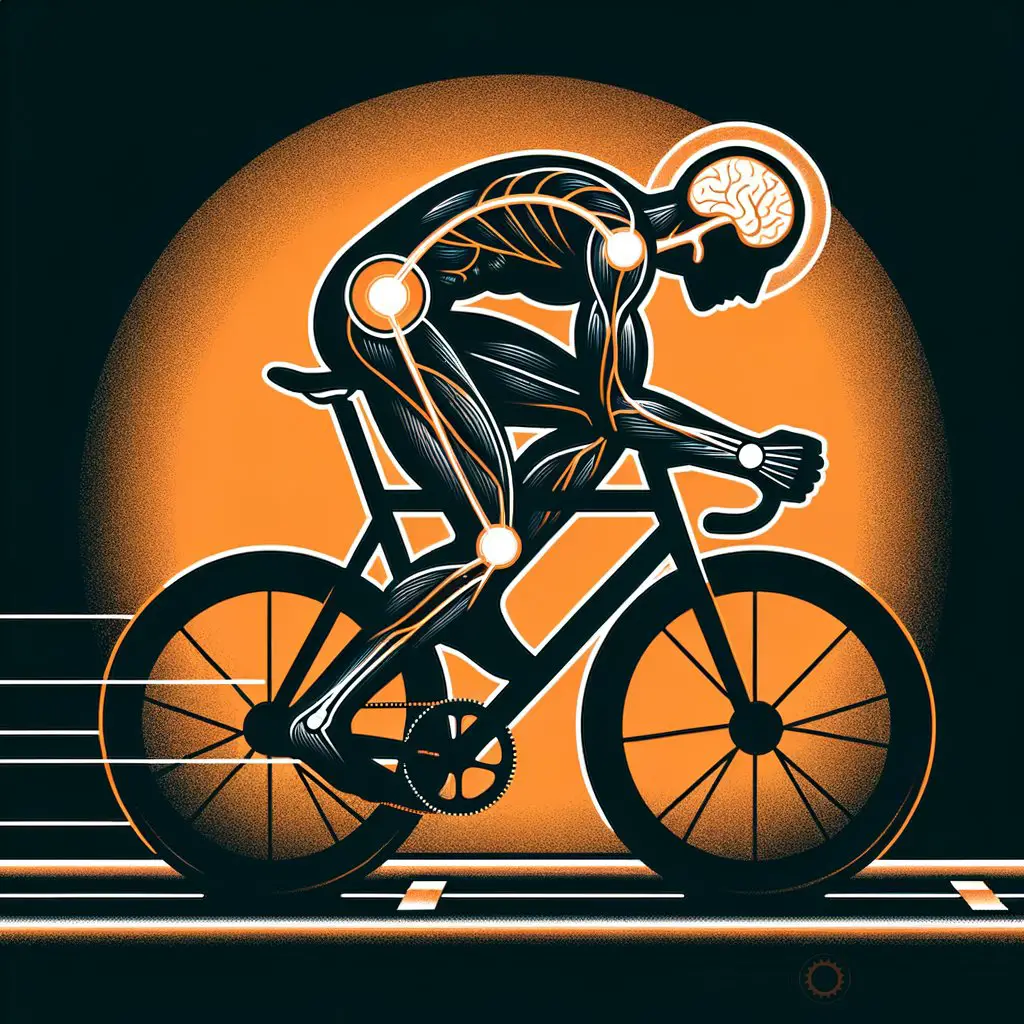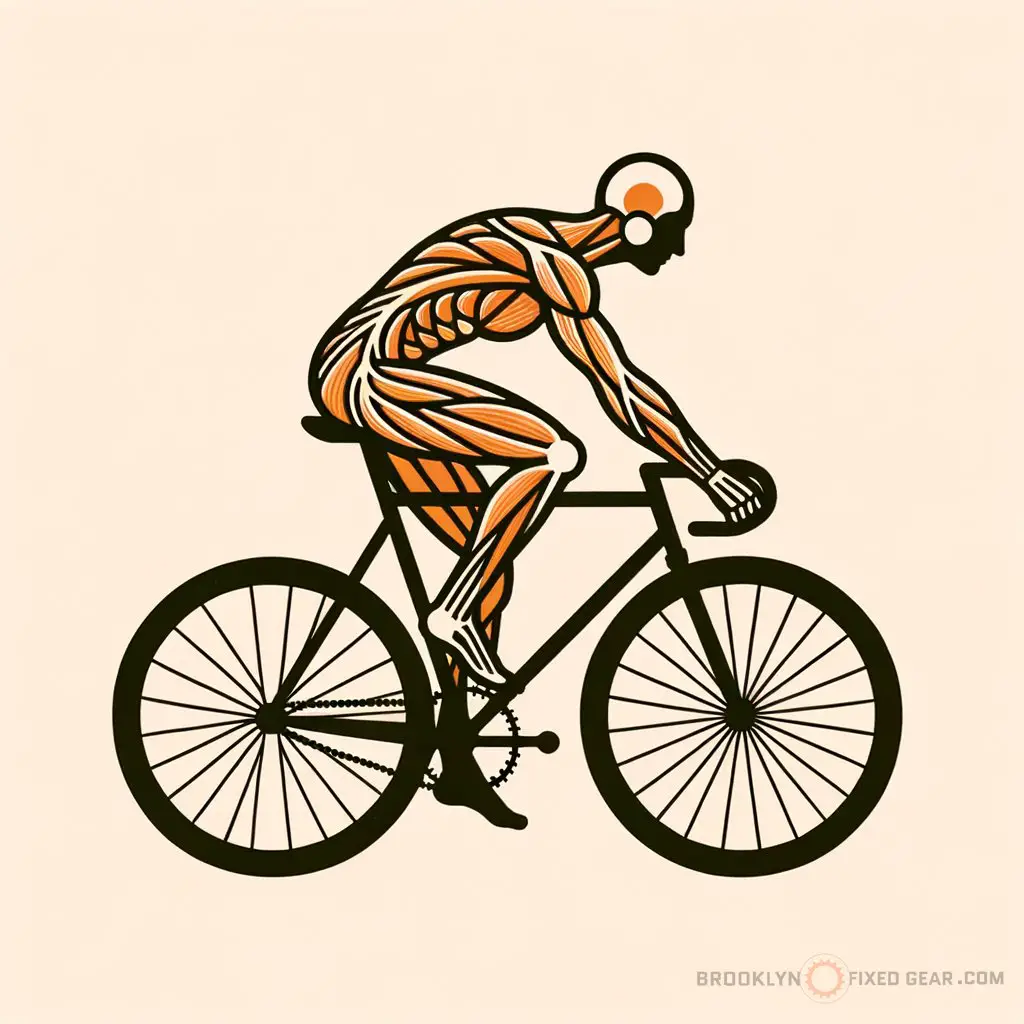Ever tried bolting down the West Side Highway, legs pumping in perfect sync with your fixed-gear bike ?That moment’s intense rush hinges on more than just adrenaline; it’s about your neuromuscular prowess .Curious what that really means?
Dive into the intricate world of neuromuscular training for cyclists , and discover how it can transform those split-second sprints and steep climbs into victories.
Key takeaways
- Neuromuscular power zone is essential for short, powerful bursts.
- Balance strength training and recovery to enhance performance.
- Sprint drills and cadence work are key for maximizing power output.
How do you fine-tune your cycling machine for maximal kick?
When we talk pushing pedals, we’re not just spinning wheels; we’re firing up a complex system where muscle meets mindset. So, listen up – here’s how neuromuscular training can help you crush those critical race moments when every millisecond counts.

1. Get to grips with the power zone
Understanding the neuromuscular power zone is like knowing the secret sauce to your sprint. This is your body’s dragster mode; using stored ATP and creatine phosphate for rapid energy bursts. What’s the catch?
It empties the tank in a heartbeat – you’ve got max 15 seconds before you’re running on fumes.
Charging up this power zone is key. This means high-intensity efforts followed by ample recovery. You’re not just training muscles, you’re schooling them in the art of the quick draw.
Hit the environmental impact of choosing a fixed gear bike for more insights on efficiency in cycling.
2. Sprint drills: Speed’s best friends
Sprint drills are the bread and butter of neuromuscular training . It’s all about explosive starts and zombie-apocalypse escapes – think full throttle, pedal to the metal. Here, you’re not only building strength but also increasing muscle coordination, which is essential when you need to launch like a rocket.
Stomps and form sprints can make a world of difference. With stomps, you’re cranking hard gears from a standstill to light up those fast-twitch fibers. Form sprints, on the flip side, crank up cadence to max.
Get the down-low on how to pinpoint the perfect gear in common mistakes made when building a fixie .
3. Strength training: Your secret weapon
Now, onto the gym – it’s not just for show muscles. It’s about fortifying the framework your cycling prowess depends on. Stronger muscles hold more ATP-PC, which means a beefier power zone.
And remember, we’re not just talking quads of steel; your whole chassis needs reinforcement.
Think of strength training as putting premium fuel in the tank. You rev up muscle mass and with it, the reserves you tap into for those sprint finales. But keep it cycling-specific, amigo.
Core, legs, back – they all come into play. For tools that’ll tighten those bolts and keep your ride smooth, check out the best bike multi-tools .
4. Ride the recovery wave
Recovery isn’t just chill time; it’s an active part of training. When you sprint, your neuromuscular battery drains fast. Recovery is your recharge, and you’ve got to make it count.
Short and punchy or longer, lower-intensity – both get you back in the fight, but they need to be used smart.
A well-recharged power zone is like a slingshot; always ready to fire. Factor in some strategic cruise time between your neuromuscular efforts to keep the band taut. If nutrition’s part of your recovery question, get some answers with nutrition guide for urban cyclists: eating for energy on the road .
5. Cadence and torque training
Let’s talk cadence and torque – think rhythm and force. To amp up peak power, you need a symphony of both, perfectly timed. Cadence is about pedal speed, torque is muscle might.
Fine-tuning these gets your sprinting sharper than a track bike’s turn on a banked velodrome.
Training torque’s about slow, hard turns against resistance – imagine pushing pedals through molasses. Cadence work, however, is like dancing on the drivetrain, fast and light. Blend them, and you’ve got the recipe for raw sprint power.
For more on keeping your ride refined, discover the pros and cons of electric assist for fixed gear bikes .
More neuromuscular training tips
Boosting your neuromuscular capacity is like fine-tuning a race car; there’s always something extra you can tweak. Whether it’s optimizing recovery or refining your pedal technique, the devil’s in the details, and believe me, these nuances can lead to monumental gains over time.
- Focus on balanced nutrition to fuel your bursts of power and aid in recovery.
- Incorporate plyometric exercises to improve explosive power and muscle coordination.
- Regularly practice mental visualization to create stronger neuromuscular connections.
- Experiment with breathing techniques that can increase focus during high-intensity efforts.
- Use a power meter to precisely track your progress on neuromuscular power outputs.
When it comes to dos and don’ts, I’ve got you covered. Check out this slick table:
| Do | Don’t |
|---|---|
| Do incorporate adequate rest and recovery | Don’t neglect your rest days |
| Do use proper bike fit and ergonomics | Don’t use an improper or uncomfortable setup |
| Do progressively increase training intensity | Don’t rush the process and overtrain |
| Do listen to your body’s feedback | Don’t ignore pain or discomfort |
| Do cross-train with other sports | Don’t focus solely on cycling |
“Neuromuscular training isn’t just about smashing it on the streets; it’s a science and an art. Like a single-speed slicing through a pack, it’s all about knowing when to push and when to pace. “
Advantages and disadvantages of neuromuscular training for cyclists
Neuromuscular training isn’t just about smashing it on the streets; it’s a science and an art that can significantly benefit your cycling performance. Let’s break it down into pros and cons so you can decide if it’s the right training for your fixie adventures.

Advantages
- Improves ability for quick, explosive efforts like sprints and climbs
- Enhances overall muscle coordination and cycling efficiency
- Increases peak power output and fatigue resistance
- Can be tailored to individual needs and goals
- Leads to better race results and overall performance
Disadvantages
- Requires a careful and well-planned approach to avoid injury
- May necessitate more equipment like weights or a power meter
- Can be time-consuming and might take away from other training
- Demands constant monitoring to track progress and adapt the program
- Risk of overtraining if not balanced with adequate recovery.
Neuromuscular training is a double-edged sword; wielding it right can lead to victory laps and podium spots, but one slip could set you back. Like a single-speed slicing through a pack, it’s all about knowing when to push and when to pace.
In my opinion, though I’m no pro and just a dude who loves to keep it real with my fixed-gear bike, neuromuscular training feels like the kind of edge that could turn a good rider into a great one. It’s also a compelling way to switch up your routine – instead of just clocking miles, you’re zeroing in on the power behind each pedal stroke. It might seem intimidating, but after rocking some research, it’s pretty clear that this training could seriously pump up one’s performance.
Now, don’t get me wrong, this isn’t a magic solution that’ll change your game overnight. Gains in neuromuscular strength and coordination take time, and you’ve got to stack it up with dedication, proper nutrition , and of course, that undying passion for the ride. But hey, that’s just my two cents from where I stand, fixed in the heart of NYC’s cycling hustle.
If you are a visual learner, check out this video titled ‘Coach Clare Talk NeuroMuscular Training for Cyclists – SCBC Winter Seminar’
Frequently asked questions (FAQ)
What exactly does neuromuscular training involve for a cyclist?
Neuromuscular training for cyclists focuses on short, intense efforts to train the body’s ability to fire muscles quickly and powerfully. This includes exercises like sprints, stomps, and form sprints, as well as strength training and plyometric workouts. The goal is to enhance the communication between the brain and muscles for improved efficiency and power production.
Can neuromuscular training benefit endurance cyclists or is it just for sprinters?
While it might seem tailored to sprinters, neuromuscular training can be a game-changer for endurance cyclists too. By improving neuromuscular efficiency, riders can save energy over the long haul, delay fatigue, and still have the juice to punch it when it counts. It’s a tool that sharpens your finishing kick, no matter the length of the race.
How usually should I practice neuromuscular training?
The key to successful neuromuscular training is balance. It’s potent stuff, so a couple of times a week should suffice, mixed into a varied training routine. Always allow for recovery time between sessions, as these are high-intensity workouts.
It’s a bit like adding spice to a meal – just the right amount, and you’ve got a winner.
Final thoughts
As we come to the finish line of neuromuscular training for cyclists, remember it’s not just about raw power; it’s about fine-tuning the machine that is your body for top-notch performance. Whether you’re darting through an urban jungle on your fixie or crushing it out on the open road, adding neuromuscular techniques into your routine could be the catalyst to level up your ride. It’s a lot to take in, but with patience and persistence, you’re sure to feel the burn and see the gains.
What’s your experience with neuromuscular training been like? Have you felt the difference in those critical race moments? I read and reply to every comment.
If you found this article helpful, share it with a friend, and check out my full blog for more tips and tricks on mastering your cycling skills. Thanks for reading and keep chasing that horizon!
















